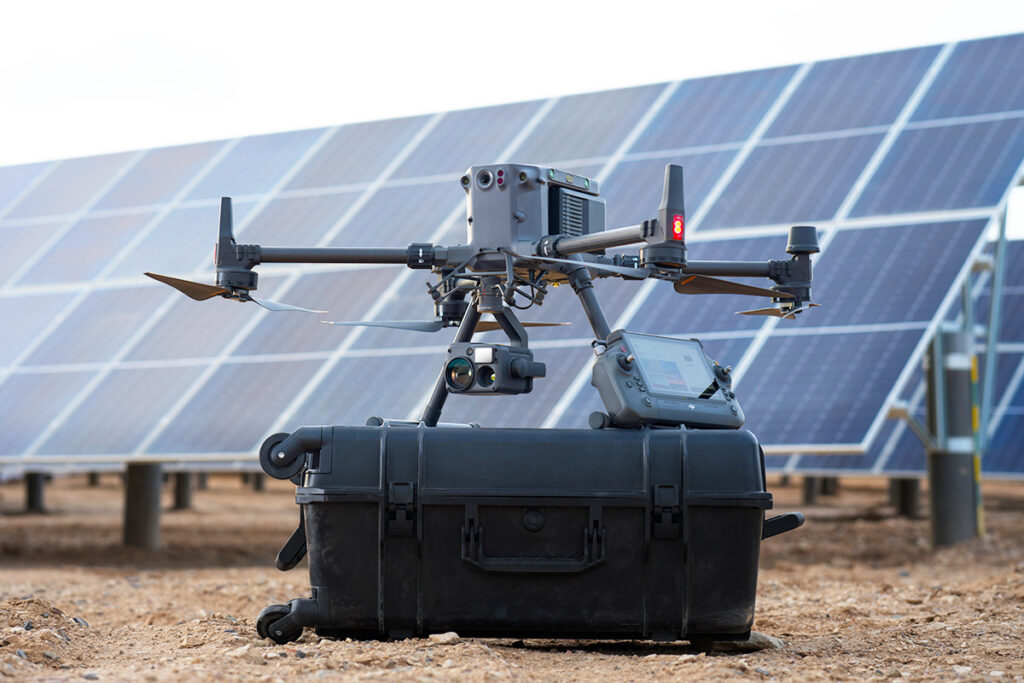Introduction
In an era marked by growing concerns about climate change and environmental sustainability, innovative technologies are playing a pivotal role in mitigating our carbon footprints. Drones, initially designed for military and recreational purposes, have emerged as a promising tool for reducing carbon emissions and promoting eco-friendly practices. In this article, we will explore how drones reduce carbon footprints, making our world a greener and more sustainable place, while also delving into what a “carbon footprint” is.
Understanding Carbon Footprints
A carbon footprint is a measure of the total greenhouse gas emissions, particularly carbon dioxide (CO2), associated with an individual, organization, product, or activity. These emissions occur as a result of human activities, such as burning fossil fuels, deforestation, industrial processes, and transportation. The concept of a carbon footprint is a way to quantify our impact on the environment in terms of global warming and climate change. Reducing one’s carbon footprint is essential to combat the detrimental effects of these emissions on the planet.
5 Ways of How Drones Reduce Carbon Footprints
| Sector | Carbon Footprint Reduction |
|---|---|
| Precision Agriculture | Reduced use of chemicals and water, leading to more sustainable farming practices |
| Delivery and Logistics | Decreased fuel consumption, fewer delivery vehicles on the road |
| Environmental Monitoring | Quicker response to environmental incidents, reduced environmental damage |
| Renewable Energy Inspections | Enhanced safety, efficient maintenance, and increased clean energy production |
| Wildlife Conservation | More effective monitoring and protection of wildlife, preservation of biodiversity |
Precision Agriculture
One of the most significant contributions of drones in reducing carbon footprints is in the field of agriculture. Precision agriculture, a farming approach that leverages advanced technologies to optimize crop production, relies on drones for various applications. Drones equipped with sensors and cameras can monitor crop health, detect pests and diseases, and assess irrigation needs more efficiently than traditional methods.
By providing farmers with real-time data and insights, drones enable them to use resources like water, fertilizers, and pesticides more judiciously, resulting in reduced overuse of chemicals and water. This not only increases farm productivity but also decreases the carbon footprint associated with conventional farming practices.
Efficient Delivery and Logistics

E-commerce giants and delivery companies are increasingly turning to drones for last-mile deliveries. By utilizing drones for package delivery, these companies can cut down on fuel consumption and reduce the number of delivery vehicles on the road. This streamlined approach not only reduces transportation-related emissions but also offers faster and more efficient delivery services.
In remote or hard-to-reach areas, where traditional delivery methods are less environmentally friendly, drones provide a sustainable alternative that reduces the carbon footprint of the logistics industry.
Environmental Monitoring
Drones are also making a significant impact in the realm of environmental monitoring. They can be deployed to assess and manage critical environmental issues, such as wildfires, deforestation, and illegal poaching. In the case of wildfires, drones equipped with thermal imaging and cameras can provide real-time data to firefighters, aiding in more targeted and efficient firefighting efforts.
By enabling quicker response times and better resource allocation, drones help reduce the environmental damage caused by such incidents, ultimately lowering their associated carbon emissions.
Renewable Energy Inspections
The renewable energy sector, particularly wind and solar farms, benefits greatly from drone technology. Drones can be used to inspect and maintain renewable energy infrastructure, reducing the need for human technicians to access potentially hazardous locations. This not only enhances safety but also minimizes the carbon footprint of energy production.
By conducting regular inspections with drones, wind turbines and solar panels can operate at peak efficiency, maximizing the clean energy output and minimizing downtime. In this way, drones contribute to a more sustainable energy landscape.
Wildlife Conservation
Drones are playing a crucial role in wildlife conservation efforts. Researchers and conservationists use drones to monitor and protect endangered species, survey wildlife populations, and combat illegal poaching. Drones can cover vast areas quickly and without disturbing the natural habitat, providing valuable data that aids in the preservation of biodiversity.
By bolstering conservation efforts, drones help protect ecosystems and mitigate the loss of biodiversity, which is vital for maintaining a balanced and healthy environment.
Conclusion
As the world confronts the challenges of climate change and the need for sustainable practices, drones have emerged as a valuable ally in reducing carbon footprints across various industries. Whether in agriculture, logistics, environmental monitoring, renewable energy, or wildlife conservation, these unmanned aerial vehicles are revolutionizing the way we operate, contributing to a more sustainable and eco-friendly future.
The integration of drones into these sectors not only enhances operational efficiency but also significantly reduces the carbon emissions associated with traditional practices. As technology continues to advance, we can expect drones to play an even greater role in reducing carbon footprints and helping us build a more environmentally responsible world.





